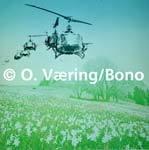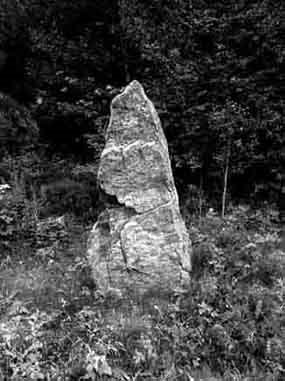art architecture boats architecture art
Gustav Vigeland was a Norwegian sculptor during the first half of the twentieth century. In the 1920’s the Norwegian government built him a studio and house in exchange for the sculptures donated to the Vigeland sculpture garden. The park is larger then the procession of sculptures, but it is the sculptures that attract tourists. They depict various states of the human condition from birth to death, love, aggression, happiness, and indifference. When I was here before I wasn’t that impressed. I preferred Carls Mills mythology to Vigeland’s. This time, wandering through the park, I was struck by the sculptures. I decided that there is a particular Norwegian sentiment in these depictions of the human.

Norsk Folkemuseum is a collection of traditional buildings from around the country brought to Oslo and arranged to recreate the setting of the original architecture. This was the beginning of my studies. The first stop on a journey into the ideas and principles that led to creating architecture not from the minds of individuals, but from the hands of a culture. There are a number of farms here that date from as far back as the 15th century and come from all over the country. They also have a transplanted stave church. It’s like a little sampler of different techniques and ideas pulled out of time and space and set down for all to enjoy.

The Viking Museum is a collection of three Viking ships that were used in the burials of Viking kings. The ships were discovered at the end of the 19th century. They were excavated along with the remaining grave goods and brought to Oslo. It’s a great museum; the three main wings are devoted to each of the ships. The most interesting thing about the Viking ship is that the structure actually comes from the skin. The strakes, or planks, are overlapped and held together with iron nails. The gap would have been filled with wool and tar to make the ship waterproof. The nature of the construction was such that the boats were flexible yet solid. This made them incredibly sea worthy and is what allowed the Vikings to sail as far west as Greenland for sure and possibly North America.

Norwegian Museum of architecture: This is what I did today. I was stoked. I figured there would be a wealth of information that I could use here and I was eager to scope it out. I walked downtown and found the building it was suppose to be in but it wasn’t there. I walked a little further and found a building under construction. I read the sign, “New Architecture Museum” it read in Norwegian. Below that it read “Architect: Sverre Fehn.” I was so proud. I had found one of the fabled current projects of Fehn. And it was the new architecture museum. I immediately went to the fence and took pictures of the building being built. Not for you all, but this was pretty exciting. These pictures are some of the first published of a new building by one of the greatest Norwegian architects ever. And as exciting as that was, and still is, I was unable to find the architecture museum’s collection. I went instead to the museum of contemporary art across the street.

The museum of contemporary art was disappointing. The main exhibit was a Norwegian fashion designer who made it big in Paris in the 70’s, Per Spooks. I didn’t read too much about him, mostly because I found the whole thing incredibly boring. Upstairs they had the permanent collection, which was also, largely, boring. There were a few interesting things. Three paintings by Per Kleiva Blad fra imperialistens dagbok I-III. This is I:

A few other things, but over all disappointing. The whole experience was made worse by the fact that the souls of my shoes squeaked the entire time I was in there. Each step an echoing screeches of dying mice. Finally I just left.
I’m trying to decide if I should move or not. There is student housing closer into town and practically right next to the architecture school. It’s also on the river park, which runs all the way up to where I am now along the Akerselva river which runs down into Oslo Center. I walk this everyday, it’s quite lovely and there are some cool buildings along it, old industrial buildings from the 19th and early 20th century. Anyway, it would be nice to live closer to the city, but at the same time it would be a little more money each month. The student housing is in old grain silos, which would be interesting. I’d have a more interesting view. But at the same time, i could use the money in my pocket. Well, I’m just mulling it over. We’ll see what happens.

Norsk Folkemuseum is a collection of traditional buildings from around the country brought to Oslo and arranged to recreate the setting of the original architecture. This was the beginning of my studies. The first stop on a journey into the ideas and principles that led to creating architecture not from the minds of individuals, but from the hands of a culture. There are a number of farms here that date from as far back as the 15th century and come from all over the country. They also have a transplanted stave church. It’s like a little sampler of different techniques and ideas pulled out of time and space and set down for all to enjoy.

The Viking Museum is a collection of three Viking ships that were used in the burials of Viking kings. The ships were discovered at the end of the 19th century. They were excavated along with the remaining grave goods and brought to Oslo. It’s a great museum; the three main wings are devoted to each of the ships. The most interesting thing about the Viking ship is that the structure actually comes from the skin. The strakes, or planks, are overlapped and held together with iron nails. The gap would have been filled with wool and tar to make the ship waterproof. The nature of the construction was such that the boats were flexible yet solid. This made them incredibly sea worthy and is what allowed the Vikings to sail as far west as Greenland for sure and possibly North America.

Norwegian Museum of architecture: This is what I did today. I was stoked. I figured there would be a wealth of information that I could use here and I was eager to scope it out. I walked downtown and found the building it was suppose to be in but it wasn’t there. I walked a little further and found a building under construction. I read the sign, “New Architecture Museum” it read in Norwegian. Below that it read “Architect: Sverre Fehn.” I was so proud. I had found one of the fabled current projects of Fehn. And it was the new architecture museum. I immediately went to the fence and took pictures of the building being built. Not for you all, but this was pretty exciting. These pictures are some of the first published of a new building by one of the greatest Norwegian architects ever. And as exciting as that was, and still is, I was unable to find the architecture museum’s collection. I went instead to the museum of contemporary art across the street.

The museum of contemporary art was disappointing. The main exhibit was a Norwegian fashion designer who made it big in Paris in the 70’s, Per Spooks. I didn’t read too much about him, mostly because I found the whole thing incredibly boring. Upstairs they had the permanent collection, which was also, largely, boring. There were a few interesting things. Three paintings by Per Kleiva Blad fra imperialistens dagbok I-III. This is I:

A few other things, but over all disappointing. The whole experience was made worse by the fact that the souls of my shoes squeaked the entire time I was in there. Each step an echoing screeches of dying mice. Finally I just left.
I’m trying to decide if I should move or not. There is student housing closer into town and practically right next to the architecture school. It’s also on the river park, which runs all the way up to where I am now along the Akerselva river which runs down into Oslo Center. I walk this everyday, it’s quite lovely and there are some cool buildings along it, old industrial buildings from the 19th and early 20th century. Anyway, it would be nice to live closer to the city, but at the same time it would be a little more money each month. The student housing is in old grain silos, which would be interesting. I’d have a more interesting view. But at the same time, i could use the money in my pocket. Well, I’m just mulling it over. We’ll see what happens.





0 Comments:
Post a Comment
<< Home